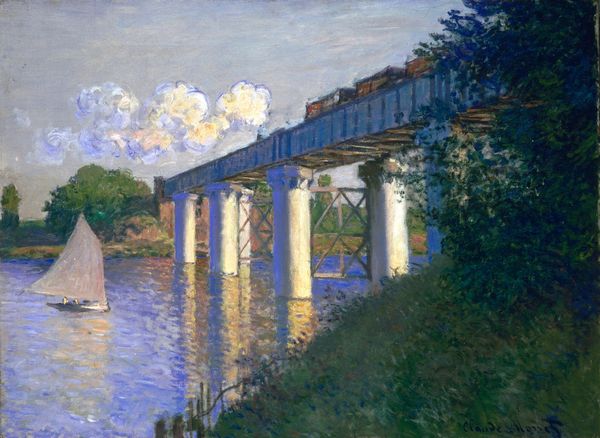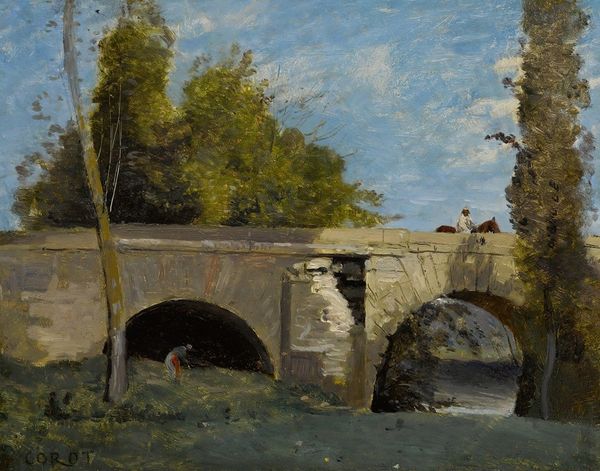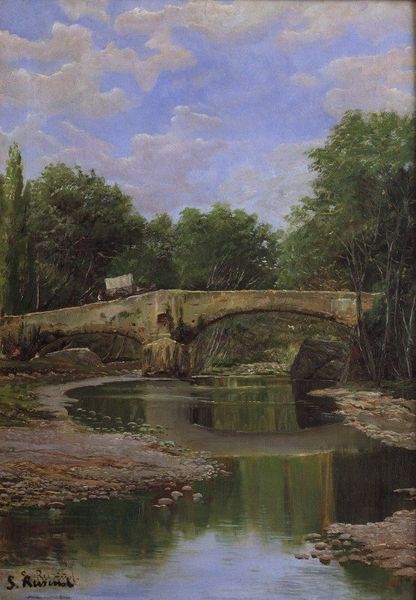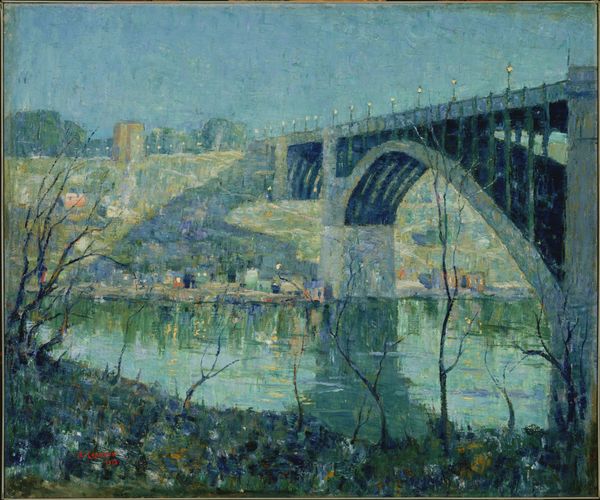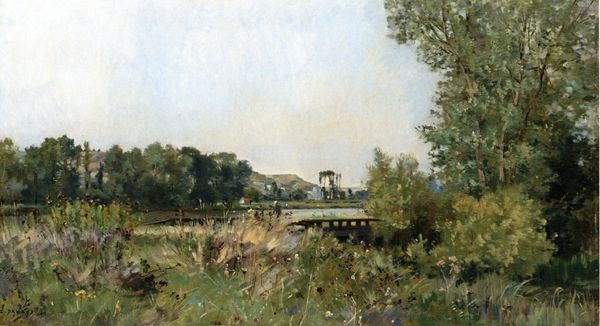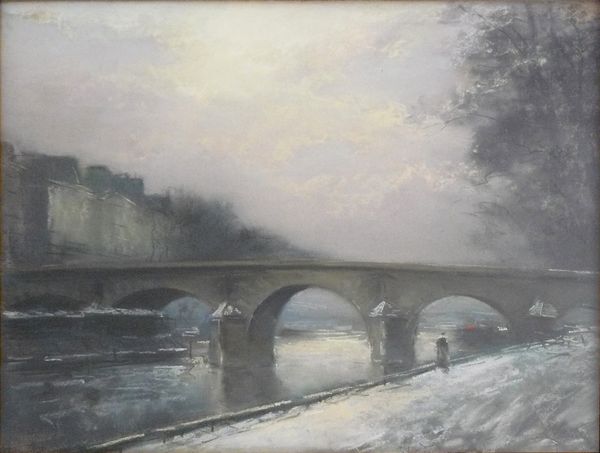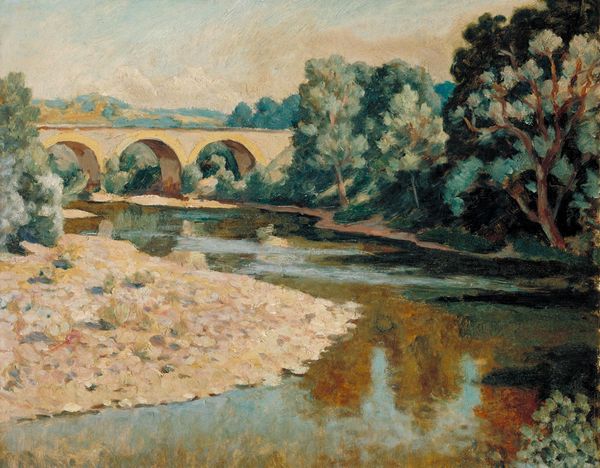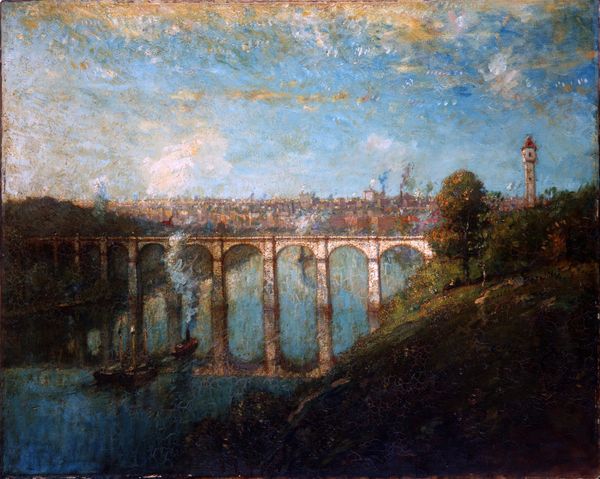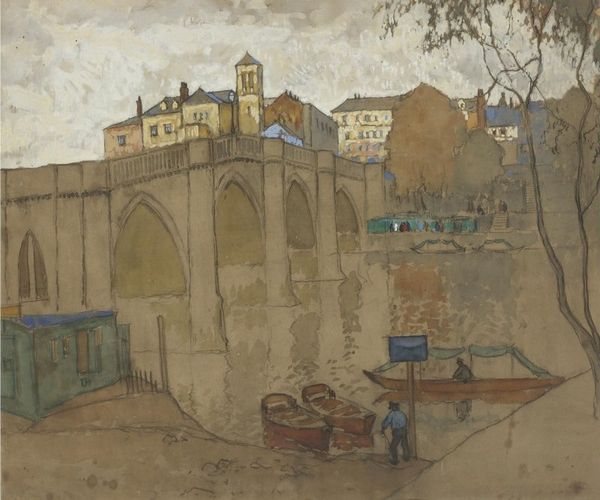
plein-air, oil-paint
#
impressionism
#
plein-air
#
oil-paint
#
landscape
#
impressionist landscape
#
oil painting
#
cityscape
#
realism
Copyright: Public Domain: Artvee
Curator: This is "The Arcueil Aqueduct at Sceaux Railroad Crossing" painted by Armand Guillaumin in 1874. Editor: It evokes a strong sense of peaceful transition. There's an idyllic, almost dreamlike quality to the muted colors and soft brushstrokes. Curator: Indeed. Guillaumin, an important figure in the Impressionist movement, presents a fascinating tension here between the natural and industrial worlds. Note how he integrates the man-made aqueduct and railway into the landscape, reflecting urbanization's encroachment upon nature during this period. It shows this aqueduct that stands as a classical Roman structure. Editor: The aqueduct arches have a real presence and a feel of time. It's so interesting to me how they frame scenes of life with travelers walking the path, evoking a feeling of both progress and historical continuity, reminding me of ancient triumphs. Curator: The positioning of people really helps provide scale in relationship to the colossal infrastructure of the aqueduct. Guillaumin had previously worked for the French government's department of bridges and roads, so engineering infrastructure was central to the artist and reflects in the very subject he chose to paint, not only because he lived near this construction. The light here in an interesting touch since plein-air works explore momentary, fleeting atmospheric changes. Editor: Looking closer, I am seeing railway lines, these could almost be perceived as a symbol of the accelerating pace of life with industrial technology, literally crisscrossing through these natural spaces, showing the speed and energy of this modern age. This is shown so well when set with the more leisurely, more graceful presence of the aqueduct. Curator: The image captures a significant shift in French society. The aqueduct, symbolizing Roman achievement, alongside the new railways signifies the move toward a modern era. Guillaumin, rather unusually, blends realism and impressionistic style within one canvas, don't you think? Editor: That balance gives this piece lasting power for me, grounding that transient sensory moment that would mark impressionism within something more concrete. Curator: An industrial world built atop its classical foundations, with humanity seemingly caught between the two. Editor: Well, for me, that visual juxtaposition really embodies our ongoing dialogue between our past achievements and present ambitions.
Comments
No comments
Be the first to comment and join the conversation on the ultimate creative platform.

